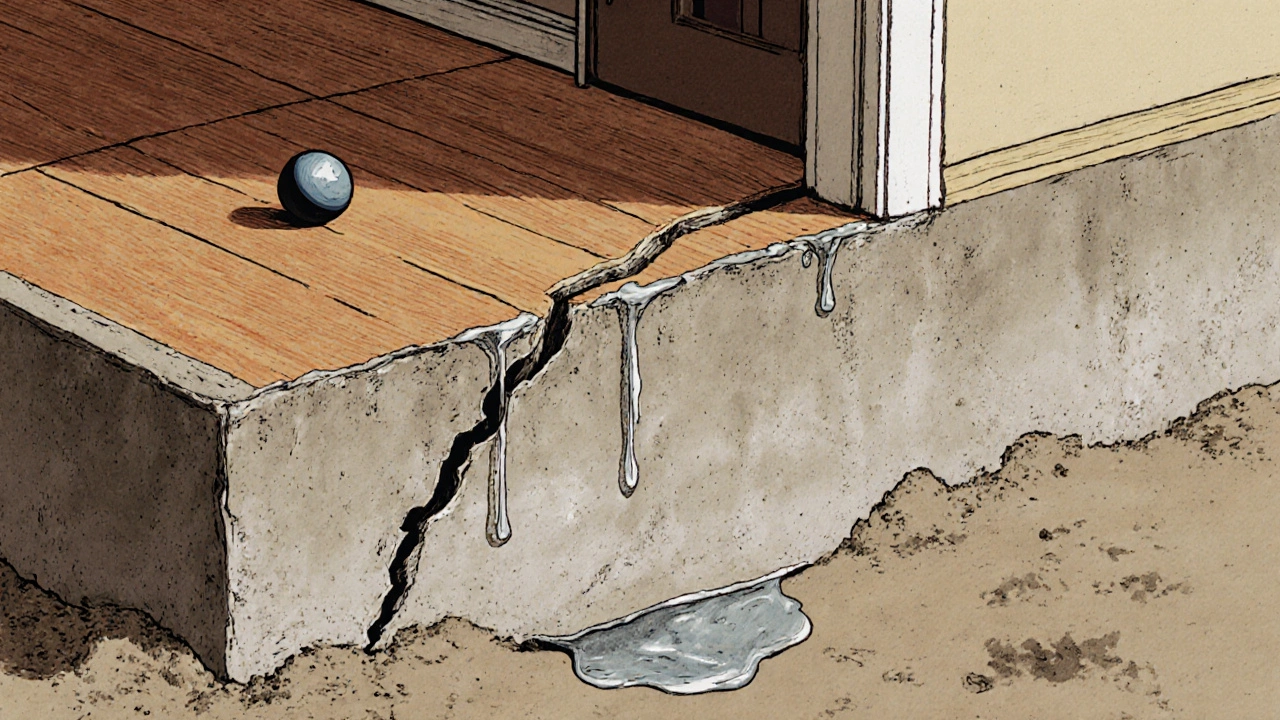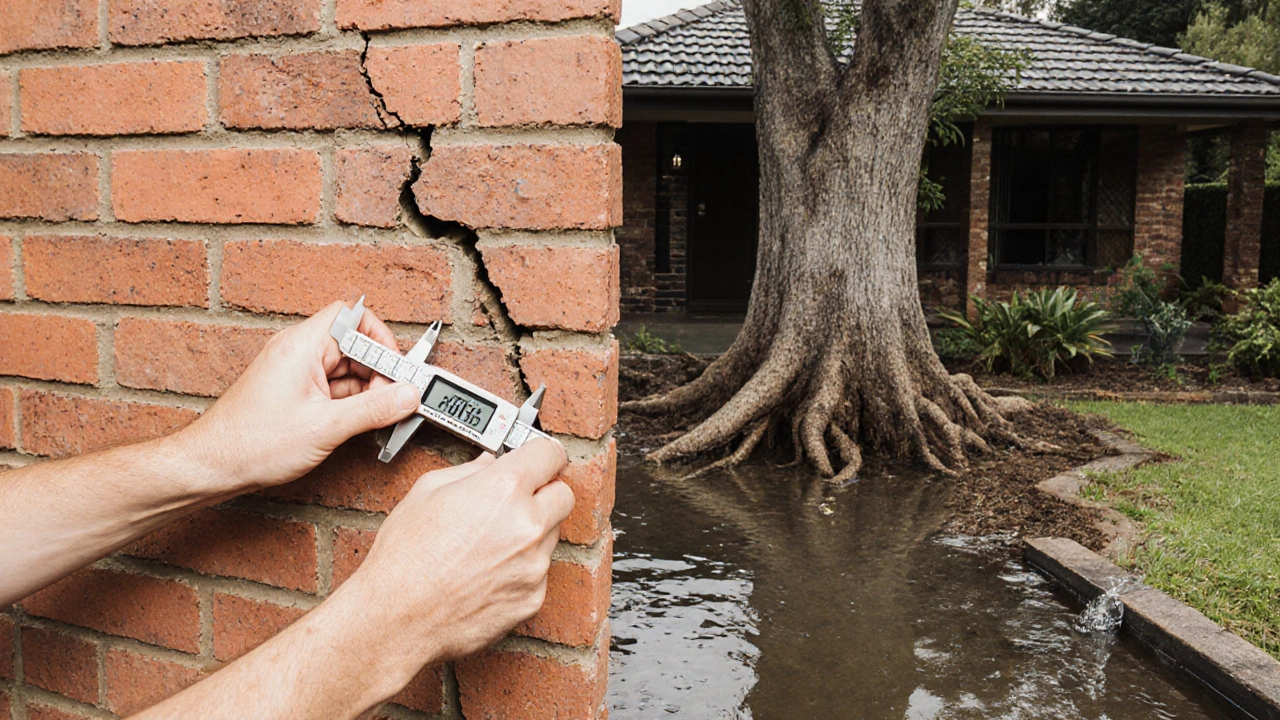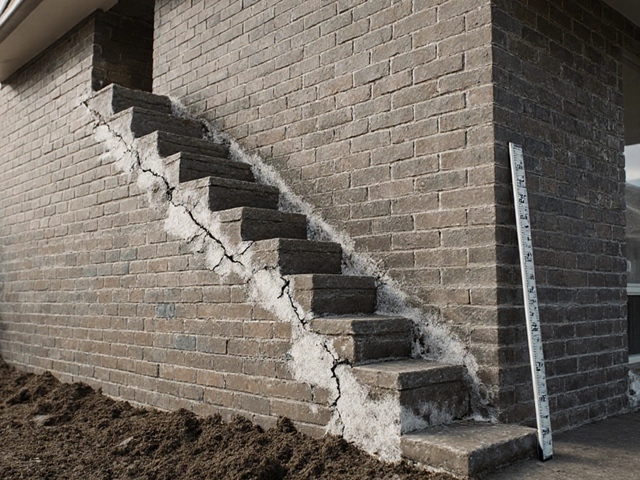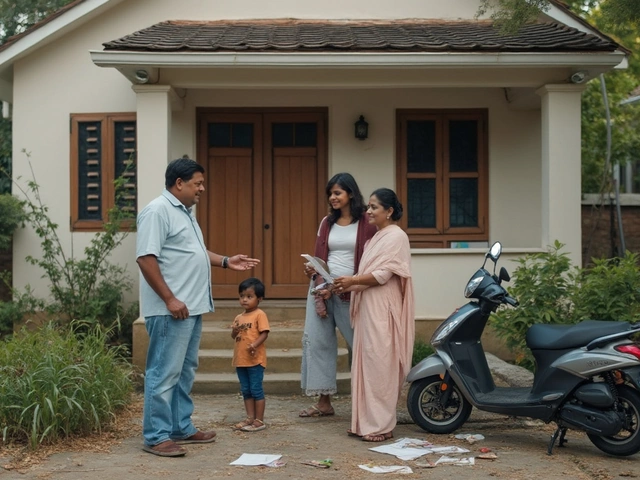Foundation Crack Risk Analyzer
How serious is your foundation crack?
This tool helps you identify whether your crack is likely cosmetic or structurally dangerous based on characteristics described in the article.
Enter your crack details above to get your risk assessment.
If your house is shifting, creaking, or showing cracks in the walls, it’s easy to brush it off as normal aging. But not all cracks are the same. Some are harmless. Others? They’re warning signs your foundation is failing-and time is running out.
What a bad foundation crack looks like
A bad foundation crack isn’t a thin, hairline line you can barely see. It’s wider than a credit card. It’s jagged. It runs diagonally across a wall. It’s growing. And it’s often paired with other symptoms like sticking doors, sloping floors, or gaps between walls and ceilings.
In New Zealand, where soil moves with rain and earthquakes, foundation cracks are common-but not always dangerous. The key is knowing the difference between cosmetic damage and structural failure.
Bad foundation cracks are typically:
- Wider than 5mm (about the thickness of a pencil lead)
- Diagonal or stair-step-running up or down along brick or block walls
- Running through multiple levels-from the basement to the second floor
- Widening over time-you can measure it with a ruler and check again in 3 months
- Accompanied by other signs like doors that won’t close, windows that stick, or floors that slope noticeably
These cracks often start at corners of windows or doors, or where the foundation meets the first floor. If you see a crack that looks like a staircase going up the wall-each step a different level of brick or concrete-that’s a classic sign of differential settlement. The ground under one part of your house is sinking more than another.
Why foundation cracks happen
Foundations crack because the ground beneath them moves. In Auckland, that’s mostly due to:
- Clay soil expansion-when it rains, clay swells like a sponge. When it dries, it shrinks. This constant push-pull stresses your foundation.
- Poor drainage-gutters clogged, downspouts pointing at the house, or flat yards that pool water near the foundation.
- Tree roots-large trees like pohutukawa or kauri can suck moisture from the soil, causing it to dry out and shrink under your home.
- Earthquakes-even minor tremors can shift footings over time, especially in older homes built before modern seismic codes.
- Old or weak materials-homes built in the 1960s-80s often used thin concrete slabs or unreinforced masonry that can’t handle modern loads or soil movement.
It’s not about the weather alone. It’s about how your home was built, what’s around it, and how water moves-or doesn’t move-away from it.
Types of cracks: which ones matter
Not every crack needs a repair crew. Here’s how to tell the difference:
Vertical cracks
These run straight up and down, usually along a wall or column. They’re often caused by concrete shrinkage as it dries. If they’re less than 2mm wide and haven’t changed in a year, they’re usually fine. But if they’re wider than 5mm or show signs of movement, they could mean your footing is settling unevenly.
Horizontal cracks
These are serious. They run side to side, often near the bottom of a basement wall. They’re caused by soil pressure pushing against the wall. If you see a horizontal crack, especially if the wall is bowing inward, your foundation is under stress. This isn’t a DIY fix. It needs professional underpinning or wall reinforcement.
Diagonal or stair-step cracks
These are the red flags. They follow the mortar joints in brick or block walls, stepping up like stairs. They’re caused by uneven settling-part of the house sinking more than another. This is the most common sign of a failing foundation. If you see these on the outside of your home, they’re likely connected to internal cracks.
Cracks with water seepage
If water is dripping through a crack, or you see white chalky residue (called efflorescence) around it, moisture is getting in. That’s not just a structural issue-it’s a mold and rot risk. Water weakens concrete, rusts steel rebar, and destroys insulation. A crack that leaks is always a bad crack.

What to do if you find a bad crack
If you spot a crack that fits the bad-crack profile, don’t wait. Don’t paint over it. Don’t ignore it because "it’s always been there." Here’s what to do next:
- Measure it-use a ruler or caliper. Mark the start and end with tape. Check it again in 30 days. If it’s wider, it’s moving.
- Check for other signs-do doors stick? Does a ball roll on its own across the floor? Are there gaps between baseboards and walls?
- Take photos-date them. These help professionals track progression.
- Call a foundation specialist-not a general builder. Look for someone certified by the New Zealand Foundation Repair Association. They’ll use laser levels, moisture meters, and sometimes ground-penetrating radar to assess the damage.
Most repairs are fixable if caught early. Underpinning, slab jacking, or installing steel piers can stabilize your home. But if you wait too long, you could be looking at $50,000+ in structural repairs-or worse, a home that’s unsafe to live in.
What bad foundation cracks look like in different homes
Foundations vary by era and construction type. Here’s what to watch for:
1950s-70s brick veneer homes
These have a brick outer wall with a timber frame behind. The brick doesn’t carry weight-it’s just a shell. But if the brick is cracking diagonally, it’s because the timber frame underneath is shifting. That’s bad. The fix isn’t repointing the brick-it’s fixing the frame.
1980s-2000s concrete slab homes
These are common in newer suburbs. Cracks in the slab itself? If they’re less than 2mm and don’t extend beyond the edge of the slab, they’re usually fine. But if the crack is wider, or if the floor above is sloping, the slab is settling. This often happens when drainage was ignored during build.
Older stone or unreinforced masonry homes
Found in Ponsonby, Newton, or Onehunga. These homes were built without steel reinforcement. Their cracks are more common-and more dangerous. A stair-step crack in a stone wall? That’s not normal. It means the wall is separating. These homes need expert assessment before any renovation.
What you shouldn’t do
Don’t:
- Fill cracks with caulk or epoxy alone-this hides the problem, doesn’t fix it
- Paint over cracks-paint doesn’t stop movement
- Assume your home inspection covered it-most standard inspections don’t test for foundation movement
- Wait for a big earthquake to "prove" it’s bad-damage accumulates slowly
- Try to fix it yourself with DIY kits-foundation repair isn’t a Home Depot job
These mistakes delay real fixes and cost more in the long run.

Prevention: how to stop cracks before they start
Good drainage is the #1 defense against foundation cracks.
- Keep gutters clean and downspouts extending at least 2 meters from the house
- Grade your yard so it slopes away from the foundation (at least 5cm per meter)
- Plant trees at least 3-5 meters from the house
- Install a French drain if your yard is flat or clay-heavy
- Check for plumbing leaks under the house-dripping pipes can soften soil
These steps won’t stop earthquakes, but they’ll stop 90% of preventable foundation damage.
Frequently Asked Questions
Are all foundation cracks dangerous?
No. Hairline cracks less than 2mm wide, especially in new homes, are usually from concrete shrinkage and aren’t structural. But if a crack is wider than 5mm, diagonal, growing, or paired with sloping floors or sticking doors, it’s likely dangerous and needs inspection.
Can I fix a bad foundation crack myself?
No. You can temporarily seal a crack with epoxy or caulk, but that only hides the problem. The real fix-underpinning, piers, or slab jacking-requires heavy equipment, engineering knowledge, and permits. DIY fixes often make things worse by masking movement until it’s too late.
How much does foundation repair cost in New Zealand?
Costs vary widely. Minor slab jacking starts at $3,000-$6,000. Full underpinning with steel piers can run $15,000-$40,000, depending on home size and soil conditions. In Auckland, homes with clay soil or steep sections often cost more due to access and complexity. Always get 3 quotes from certified specialists.
Will insurance cover foundation cracks?
Most standard home insurance policies in New Zealand don’t cover gradual foundation damage from soil movement or poor drainage. They only cover sudden events like earthquakes or burst pipes. Check your policy’s exclusions. If you live in a high-risk area, consider a separate geotechnical endorsement.
How long does it take to repair a bad foundation crack?
Simple slab jacking takes 1-2 days. Underpinning with steel piers can take 1-3 weeks, depending on the number of piers and weather. Most repairs are done in stages to avoid stressing the structure further. You’ll usually be able to live in your home during the process.
Next steps if you’re worried
If you’ve spotted a crack that matches the description above:
- Take clear, dated photos from multiple angles
- Measure the crack’s width and mark it
- Check for movement in 30 days
- Call a foundation specialist with experience in Auckland soils
- Don’t delay-foundation problems only get worse with time
The sooner you act, the cheaper and easier the fix. A small crack today could cost you half your home’s value if ignored for five years.



Write a comment